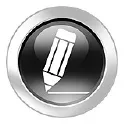
Introducing PHP 7/MySQL
Prof. Sham Tickoo
- English
- ePUB (mobile friendly)
- Available on iOS & Android
Introducing PHP 7/MySQL
Prof. Sham Tickoo
About This Book
Introducing PHP 7/MySQL textbook is an example based textbook which is written to cater to the needs of the novice users who wish to learn PHP 7 and MySQL. It is quite helpful for the experienced web developers as well who want to develop efficient programs. The textbook highlights PHP and MySQL as the easiest languages for learning web development and also explains various features of the languages in a simple and easy style.
The highlight of the textbook is that each concept introduced in it has been exemplified by a program to clarify and facilitate better understanding. Also, the line-by-line explanation of each program ensures that the users with no previous programming experience are able to understand the concepts and master the programming techniques and use them with flexibility while designing programs.
The following are some additional features of this book:
- Consists of 12 chapters that are organized in a pedagogical sequence.
- Covers various aspects of creating efficient programs using PHP 7 and MySQL.
- The first page of every chapter summarizes the topics that are covered in it.
- Each concept discussed in the textbook is exemplified by a program to clarify and facilitate better understanding.
- Step-by-step instructions that guide the users through the learning process.
- Additional information is provided throughout the textbook in the form of notes and tips.
- Self-Evaluation Test and Review Questions are given at the end of each chapter so that the users can assess their knowledge.
Table of Contents
Chapter 1: Introduction to Dynamic Websites
Chapter 2: Setting Up the Development Environment
Chapter 3: Fundamentals of PHP
Chapter 4: Variables, Constants, and Strings
Chapter 5: Operators
Chapter 6: Control Structures
Chapter 7: Functions, Classes, and Objects
Chapter 8: Arrays
Chapter 9: Form Implementation and Validation
Chapter 10: File Handling, Sessions, and Cookies
Chapter 11: Introduction to MySQL
Chapter 12: PHP and MySQL Integration
Index
Frequently asked questions
Information

- <!Doctype html> defines the document to be HTML5 (HTML version 5).
- The text between <html> and </html> describes HTML document.
- The text between <head> and </head> provides information about the document.
- The text between <title> and </title> provides a title for the document.
- The text between <body> an...